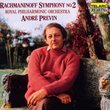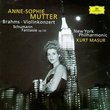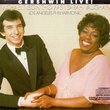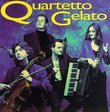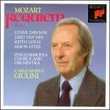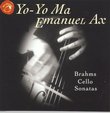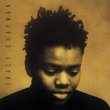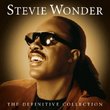| All Artists: Cervantes; Caturia; Hernandez, Juana Zayas Title: Juana Zayas:A Treasury of Cuban Piano Classics Members Wishing: 1 Total Copies: 0 Label: Music & Arts Programs of America Original Release Date: 1/1/2006 Release Date: 1/1/2006 Genres: Dance & Electronic, Classical, Latin Music Styles: Opera & Classical Vocal, Chamber Music, Historical Periods, Classical (c.1770-1830) Number of Discs: 1 SwapaCD Credits: 1 UPC: 017685106927 |
Search - Cervantes; Caturia; Hernandez, Juana Zayas :: Juana Zayas:A Treasury of Cuban Piano Classics
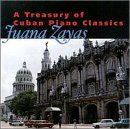 | Cervantes; Caturia; Hernandez, Juana Zayas Juana Zayas:A Treasury of Cuban Piano Classics Genres: Dance & Electronic, Classical, Latin Music
|
Larger Image |
CD DetailsSimilarly Requested CDs
|
CD ReviewsA disc to be treasured Robert Rimm | Philadelphia, PA USA | 09/27/2002 (5 out of 5 stars) "This extraordinary recording recalls those great artistic pairings that inseparably combine music with the amor patriae of a fervent musician: Arthur Rubinstein playing Chopin and Szymanowski; Alicia de Larrocha playing Albéniz and Granados; and now, Juana Zayas interpreting Cervantes, Caturla, Hernández, and Lecuona. Cuban-born Zayas-whose landmark recording of the Chopin études placed her among our consummate Chopin interpreters-completely identifies with the music of her compatriots.Zayas left Havana for the Paris Conservatory in her late teens, as did Ignacio Cervantes (1847-1905) nearly a century earlier. His piquantly syncopated Cuban dances-30 of which are presented here-feature lively tango-habanera rhythms and folk-based elements, infused with insouciance, humor and nostalgia. Their quirky titles-Three Knocks, The Charmer, Farewell to Cuba, The Jealous One, Interrupted, Lost Illusions, to name a few-bring to mind other engaging collections of piano works, such as Alkan's Esquisses or Mendelssohn's Songs Without Words.The name of Alejandro Caturla (1906-1940) will be unknown to most music lovers. None of his music is listed in the Schwann catalog. He gave a classical cast to Afro-Cuban influences, similar to what Albéniz achieved with his Iberia and Suite española. Caturla's Danza del tambor brings to mind the sharp rhythmic allure and dissonance of Bartók or Ginastera, while the gently affecting Pastoral Lullaby, a folk-based guajira, lingers long after its three minutes have passed.Gifted in a number of fields, Caturla became a lawyer and judge, only to be assassinated by an irate defendant. Each of these composers became politically aware by necessity, given their country's long history of instability. Gisela Hernández (1912-1971) established ties to the Castro Government, which quickly recognized her teaching and compositional abilities. She was also instrumental in publishing the critical editions of Cervantes's music. Among her Cubanas represented here, Guajira is touched with the same gently rocking melancholy as Caturla's piece.The music of Ernesto Lecuona (1896-1963) is the most often recorded of the four. As with Caturla, he was largely self-taught. His Afro-Cuban Dances are especially appealing; one cannot listen just once to these captivating pieces.Zayas brings a beguiling zest and wit to the entire disc, all imbued with a native rhythmic sense. Realistically recorded, her generous, spirited playing inevitably brings a smile, evokes an affecting melancholy or warmly lifts one's mood. In contrast to the refinement of Zayas's playing, the awkwardly written and occasionally misspelled booklet notes represent the only drawback to an altogether inspired project." Lost and Found Freedom Robert Rimm | 10/09/2001 (5 out of 5 stars) "Most of the Cuban music Ms. Zayas plays in this wonderful CD are pieces from the past, lost to many Cubans, like myself. What a joy it was for me to discover this CD as I searched the web! I was aware of Ms. Zayas's magnificent technique, for I have heard her play live Chopin's Piano Concerto in F at a concert in Florida-not an easy piece to play, for it needs not only a great technique but a lot of heart as well. That is why I was expecting this CD of Cuban Music to be played brilliantly and with a love of heart. And that much I got, and a lot more, for Ms. Zayas has also a fantastic sense of rhythm-the kind most "classical musicians" do not have-and she makes these pieces (most of which are Cuban dances) move with passionate ease and abandon, the way Cuban men and women love to move as they dance and make love. I was told she is planning to record Chopin's mazurkas (which are also dances), so I cannot wait for the new CD to come out. Ms. Zayas found lost old music and played it with a freedom that one seldom if ever hears in the classical music world. Bravo for her. Let's have some more." A TREASURY TO CHERISH Robert Rimm | 03/22/2001 (5 out of 5 stars) "It was with great excitement that I sat down to listen to Ms. Zayas's latest recording: "A Treasury of Cuban Piano Classics", spanning over a century, and ranging from Cervantes to Hernández and Lecuona. I confess that I own Ms. Zayas's magnificent recording of the Chopin Etudes, selected by The International Piano Quarterly as the "compelling first choice" recording of the Etudes, beating such piano greats as Cortot, Pollini and Ashkenazy! No wonder Harold C. Schonberg, the eminent music critic of The New York Times raved about Ms. Zayas's playing of the Etudes, calling her "a Chopin pianist of the manor born."Now, one thing is to play Chopin brilliantly. Another is to play Cuban music well. Cuban classics cannot be played "by the book" anymore than Gershwin's music can be played "by the book", for the soft 'swing' that Gershwin himself used in his own playing, does not appear anywhere on the written page. One has to be born Cuban to play this music well. And Ms. Zayas IS Cuban. And folks, is SHE Cuban! Her reading of Cervantes's Danzas is not only technically impeccable, but filled with ZANDUNGA, as we Cubans call that subtle freedom Cervantes himself loved, expected and admired. Her reading of these dances is truly a joy to listen to. And so is her reading of Gisela Hernández's Cubanas. And I should know, for I had the honor of having studied with Ms. Hernández herself.I also had the honor of having taken several piano lessons with Lecuona. It is no secret that Lecuona owed a lot to Cervantes, for Cervantes and his sister were two of Lecuona's teachers. Lecuona's piano playing was elegant, aristocratic. Passionate and romantic to the very end of his days, he loved to improvise as he played, slightly altering and changing his own music during performance. He himself told me that the printed page was but a rough sketch of the real music. This can be proven by several of the idiosyncrasies Lecuona constantly used in the playing of his music. One of them was to brake most right-hand octaves using the lower note of the chord as an appogiatura for the rest of the chord. Another, to slightly delay the down beat --what Cubans call a "tumbaito". He didn't write this down on the music, he told me, because it would make its reading exceedingly cumbersome. This is why I was delighted to hear Ms. Zayas's renditions of some of Lecuona's most well-known pieces. Because in her reading, Ms. Zayas's aristocratic, yet passionate playing is so much like Lecuona's own that the comparison is almost uncanny. BRAVO! Ms. Zayas's "Treasury of Cuban Piano Classics" is indeed a treasury to cherish. She deserves not only five stars, but five stars plus -- and the some."
|

 Track Listings (50) - Disc #1
Track Listings (50) - Disc #1